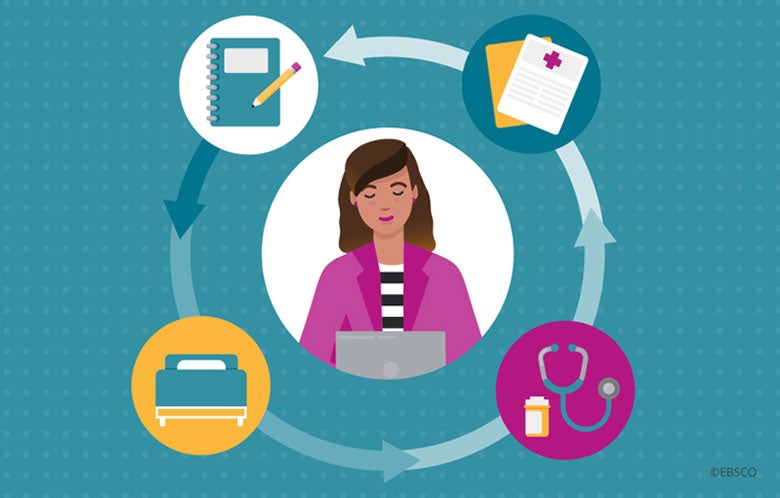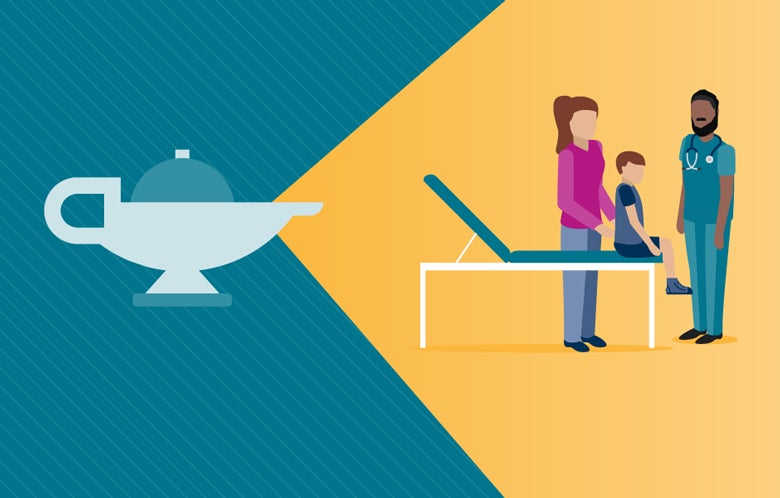Growing up, I didn’t know many nurses aside from the nurses at the pediatrician’s office and at school. At first, I really didn’t want to be a nurse. To me, nurses were women in white who cleaned vomit, gave shots, and handed out lollipops to soothe tears. I wanted to be a writer. I looked up to my favorite authors and tried to emulate their style and form. I also craved creativity and sought activities that allowed me to be creative.
When I was about 14, everything changed. A life-threatening illness led to a three-month hospital stay and major surgery. It was during that time that I discovered what nurses do. I was amazed at these articulate, intelligent and compassionate nurses. It was these wonderful professionals who helped me endure a very bleak time in my life and pulled me back on my feet.
After I left the hospital, I went back to high school a changed person. While I still wanted to write, I carefully considered nursing. Did I have the courage to change paths and become a nurse? What would it take to be one of these very special people? You’ve probably guessed that I ended up studying to be a nurse. In 1986, I became licensed as an RN. Eventually, I attended graduate school to receive my master’s degree as a clinical nurse specialist.
In 1989, I began working in Philadelphia after working for three years in a community hospital in rural New Jersey. I wanted to experience working in a large hospital and pursue a graduate degree in nursing. More importantly, I was seeking positive role models to help guide me in my career.
At my first big-city job as a bedside nurse in an intermediate coronary care unit, I met a group of young, energetic, bright nurses working to change the face of nursing. These nurses had advanced degrees and were dedicated to excellence in bedside nursing. As central members of a multidisciplinary team, they displayed confidence and earned the respect of patients and clinicians. They cultivated an environment of inquiry and learning. These amazing women became my role models and helped shape my ideas for the type of nurse I wanted to be.
After obtaining a master’s degree in nursing, I wanted to pay it forward and help other new, bright nurses perform at the top of their game. I landed in the field of publishing and I have never looked back. For nearly 25 years, I have worked on books, videos, apps, and e-learning courses that help practicing nurses perform their jobs. I take great pride in every product I have worked on. To create these products, I draw on my own experience at the bedside, caring for patients in a variety of settings. More importantly, I reflect on how my early role models inspired me to follow my dreams.
Today as I sit in my home office, I work on collating evidence from some of the most respected nurses and researchers to develop practical skill sets for nurses working at the point of care. My mailperson recently delivered a fresh batch of books to augment my ever-growing library of resources. One of those books was edited by Debra L. Wiegand, PhD, one of my role models. She is co-editor and editor of four editions of the highly acclaimed AACN Procedure Manual for Critical Care. This amazing nurse not only shaped the careers of so many nurses at the bedside, she went on to teach, perform ground-breaking research, author numerous books, and help countless critically ill patients with her work on end-of-life care. Sadly, Debra recently passed. But her legacy lives on and I am honored to play a part in its fulfillment.



